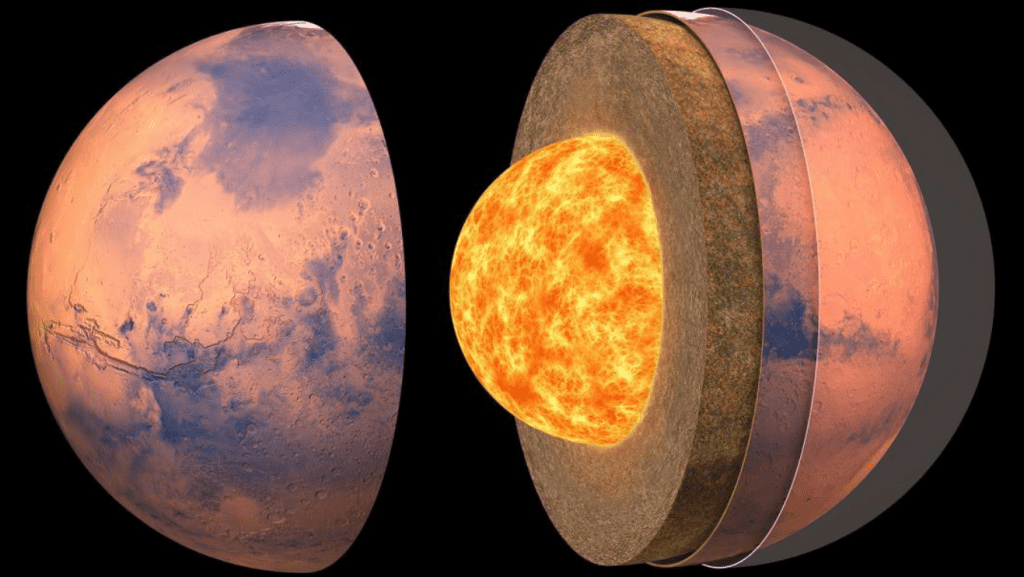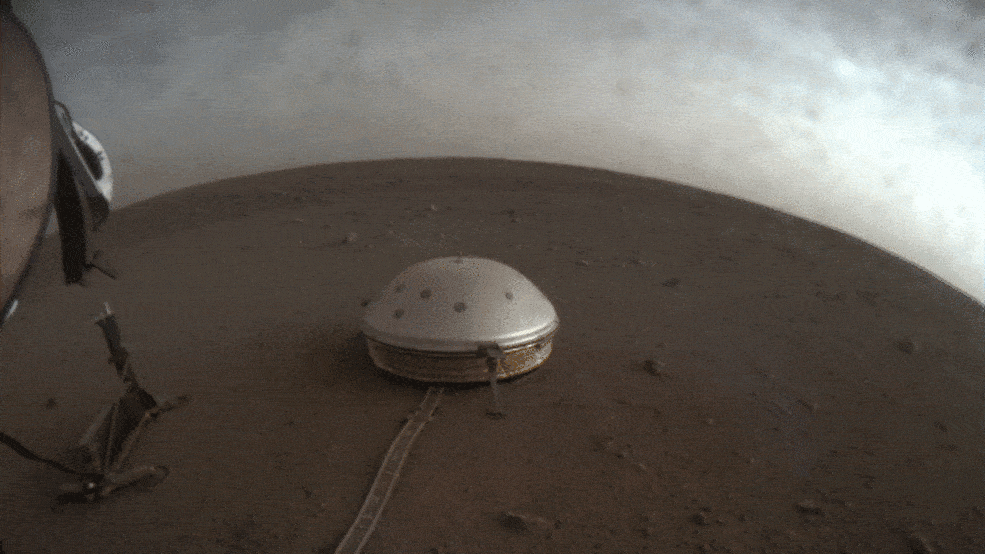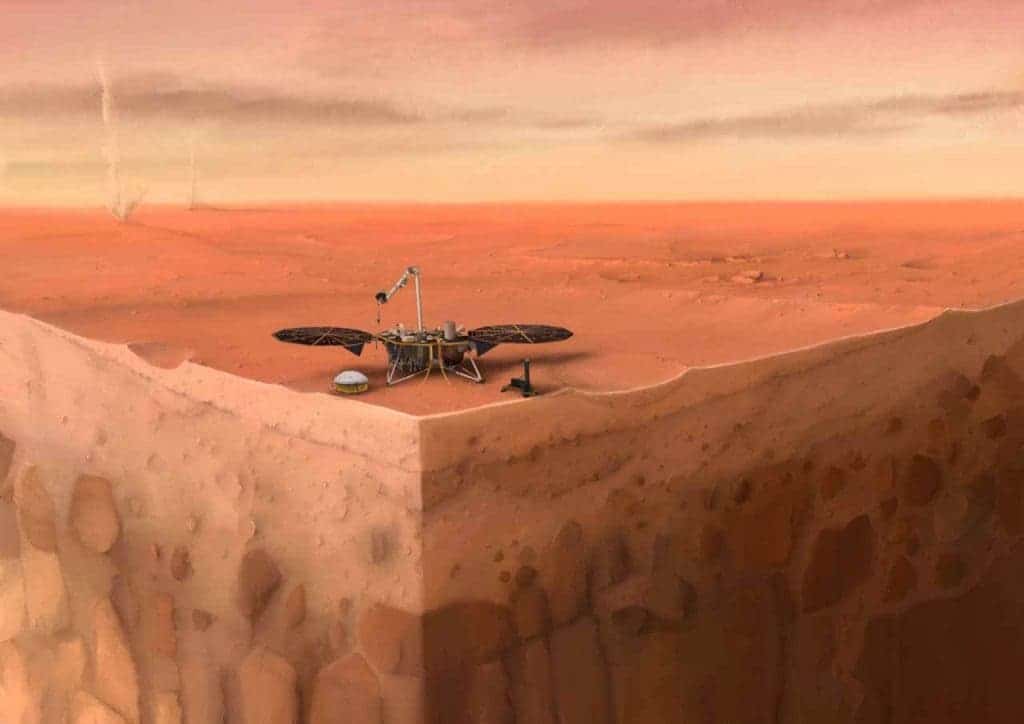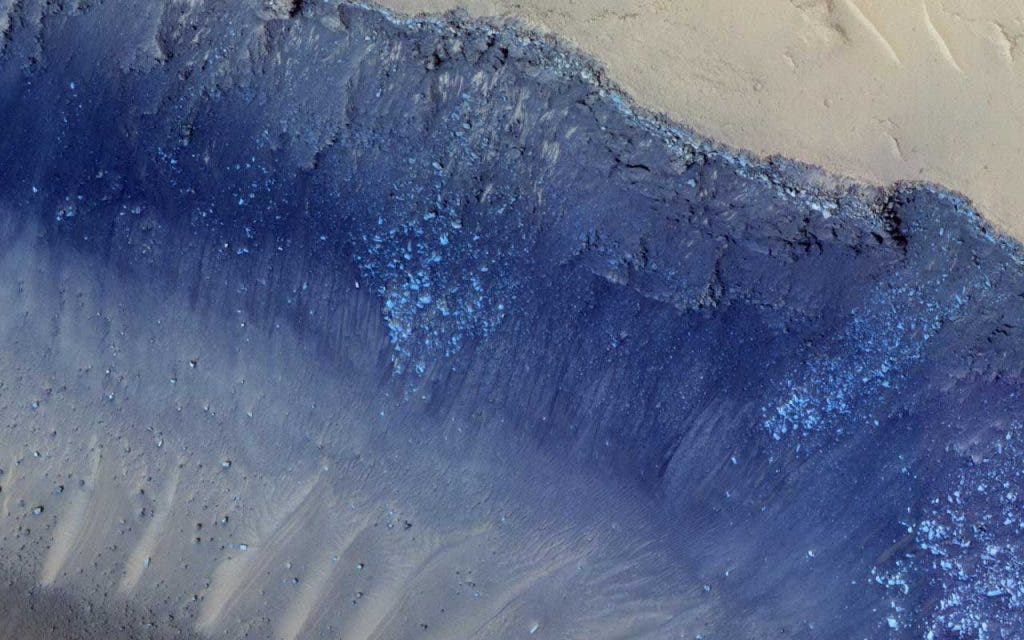While Martian rovers like Curiosity or Perseverance take the spotlight, it’s the InSight lander that can help us look deep into the Red Planet. In a set of new papers, researchers analyzing 174 marsquakes presented the most in-depth data of the Red Planet, including data on its crust, mantle, and molten core.

The pulse of Mars
The three papers each focused on one of the main layers of Mars: the crust, the mantle, and the core. If those three sound familiar — well, it’s because they’re also the layers of the Earth. Researchers have known that Mars must have a similar structure of a while, but as to the detailed structure of these three layers, that’s little more than an educated guess based on gravitational measurements.
NASA’s InSight mission wanted to change that. Using its Seismic Experiment for Interior Structure (or SEIS) seismometer tool, the space agency can monitor marsquakes — or, if you will, earthquakes on Mars. The seismometer can measure the pulse of Mars by studying waves created by marsquakes, thumps of meteorite impacts, and even surface vibrations generated by activity in Mars’ atmosphere and by weather phenomena such as dust storms.
Believe it or not, most of what we know about the Earth’s deep structure comes from earthquakes. It’s not that researchers haven’t tried digging or studying the subsurface in other ways, but even the deepest hole we’ve dug doesn’t even come close to the mantle — let alone the core. So instead, researchers turned to the field of seismology to fill in the gaps.

Earthquakes (and marsquakes) produce seismic waves that spread through the planet. Like acoustic waves that reflect off of walls or other surfaces, seismic waves also reflect (or refract) when they encounter different surfaces. InSight’s SEIS tool can capture data from these waves, and based on this data, enable researchers to assess the Martian subsurface.
“What we’re looking for is an echo,” said Amir Khan of ETH Zurich, lead author of the paper on the mantle. “We’re detecting a direct sound – the quake – and then listening for an echo off a reflector deep underground.”
Another piece of important information comes from the speed of seismic waves — especially
Understanding the Red Planet
Of course, while we have thousands of seismometers on Earth, we only have one on Mars, so the level of detail we can obtain is far lower — but it’s still better than anything we’ve had so far.

The first step is establishing just how big these large layers are, and then look for any details that can be pieced together.
“Layering within the crust is something we see all the time on Earth,” said Brigitte Knapmeyer-Endrun of the University of Cologne, lead author on the paper about the crust. “A seismogram’s wiggles can reveal properties like a change in porosity or a more fractured layer.”
The first finding was that the crust was thinner than expected, and that it appears to have two or three sub-layers. It goes as deep as 12 miles (20 km) if it has two sub-layers, or 23 miles (37 km) if there are three.
Extrapolated across the planet, this suggests the Martian crust averages between 24 and 72 kilometers thick, and “both of those are actually on the thin end of our pre-mission expectations,” Panning says. Some models had previously put the crust at 100 kilometers thick, but according to these results, that’s not exactly the case. Earth’s crust is 5 to 70 km thick.
Meanwhile, the mantle goes down 969 miles (1,560 km), and the core has a radius of 1,137 miles (1,830 km). The Martian mantle doesn’t have the depth and pressure needed to create a lower mantle — a type of layer that is present on Earth. This layer helped insulate the Earth’s core when the planet formed, so without it, Mars may have cooled much faster than the Earth (also depending on what the core is made of).
Researchers also explain that the core must be molten — if it were solid, some of the observed waves wouldn’t have been possible.
Where no man has gone before

The study offers an unprecedented opportunity to understand not just the structure of Mars, but the structure of all rocky planets.
“This study is a once-in-a-lifetime chance,” said Simon Stähler of the Swiss research university ETH Zurich, lead author of the core paper. “It took scientists hundreds of years to measure Earth’s core; after the Apollo missions, it took them 40 years to measure the Moon’s core. InSight took just two years to measure Mars’ core.”
Unlike Earth, Mars doesn’t have any big earthquakes, because it doesn’t have any tectonic plates. The vast majority of earthquakes on Earth happen due to the movement of these tectonic plates, whereas on Mars, quakes are caused by rock faults, fractures, landslides, or by the rocks contracting as the planet continues to cool — which means these earthquakes are not as strong. Out of the 174 recorded quakes, not one was over 4.0 in magnitude.
“We’d still love to see the big one,” said JPL’s Mark Panning, co-lead author of the paper on the crust. “We have to do lots of careful processing to pull the things we want from this data. Having a bigger event would make all of this easier.”
InSight’s way around this challenge is through precision: it can measure vibrations on the scale of a hydrogen atom, and without the oceans and human activity to create noise, it can measure much more peacefully.

This is the first time we have information about another planet’s core and mantle. Researchers have previously only mounted seismometers on Earth and the Moon.
As InSight records data from more marsquakes, NASA researchers will continue to analyze them and piece together more and more information about the Red Planet’s inside. After all, you don’t get the chance to find a planet’s core very often.


